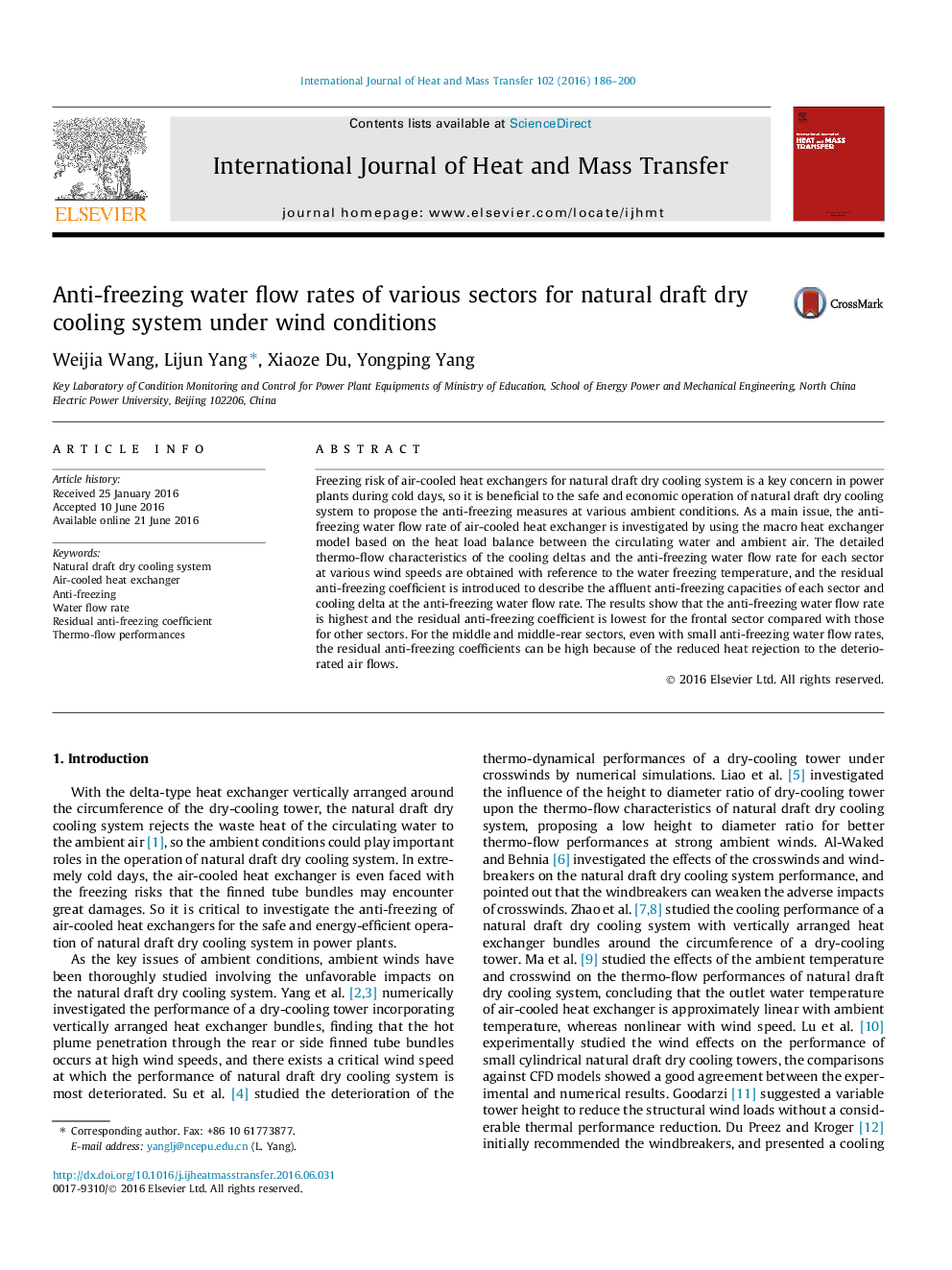| Article ID | Journal | Published Year | Pages | File Type |
|---|---|---|---|---|
| 7055058 | International Journal of Heat and Mass Transfer | 2016 | 15 Pages |
Abstract
Freezing risk of air-cooled heat exchangers for natural draft dry cooling system is a key concern in power plants during cold days, so it is beneficial to the safe and economic operation of natural draft dry cooling system to propose the anti-freezing measures at various ambient conditions. As a main issue, the anti-freezing water flow rate of air-cooled heat exchanger is investigated by using the macro heat exchanger model based on the heat load balance between the circulating water and ambient air. The detailed thermo-flow characteristics of the cooling deltas and the anti-freezing water flow rate for each sector at various wind speeds are obtained with reference to the water freezing temperature, and the residual anti-freezing coefficient is introduced to describe the affluent anti-freezing capacities of each sector and cooling delta at the anti-freezing water flow rate. The results show that the anti-freezing water flow rate is highest and the residual anti-freezing coefficient is lowest for the frontal sector compared with those for other sectors. For the middle and middle-rear sectors, even with small anti-freezing water flow rates, the residual anti-freezing coefficients can be high because of the reduced heat rejection to the deteriorated air flows.
Keywords
Related Topics
Physical Sciences and Engineering
Chemical Engineering
Fluid Flow and Transfer Processes
Authors
Weijia Wang, Lijun Yang, Xiaoze Du, Yongping Yang,
